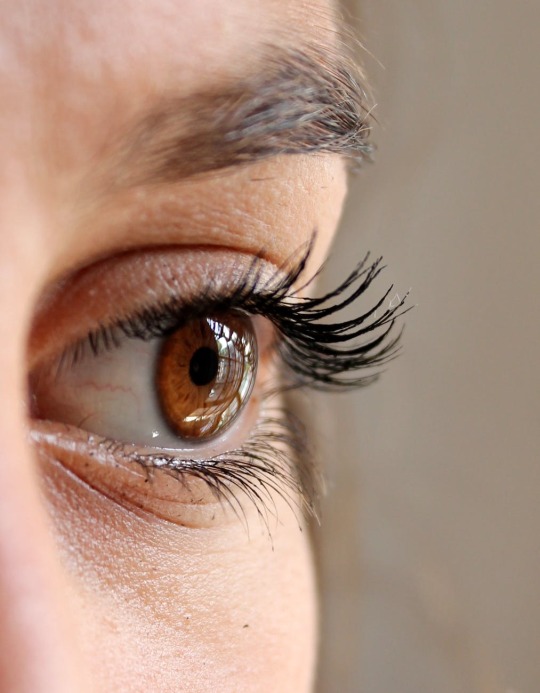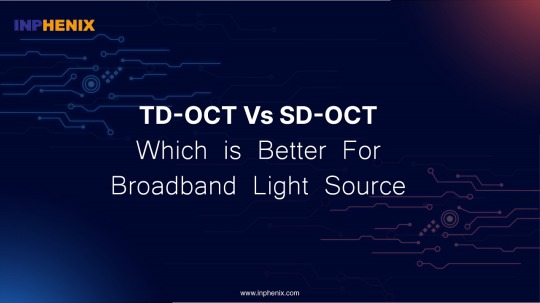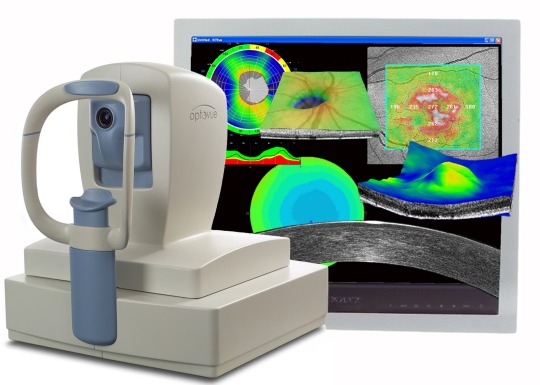#optical coherence tomography
Text
Optometry devices have undergone significant transformation, enabling eye care professionals to conduct precise assessments and provide tailored treatment solutions. Optical coherence tomography (OCT) stands out as a prime example of technological innovation in the field of optometry. This non-invasive imaging technique allows optometrists to visualize the layers of the retina with remarkable detail, aiding in the early detection and monitoring of retinal diseases such as macular degeneration and diabetic retinopathy. With its ability to capture high-resolution cross-sectional images of ocular structures, OCT has become an indispensable tool in the management of various ocular conditions.
#diagnostic accuracy#digital communication technologies#Optical coherence tomography#practice of optometry#optometry technology#optometry devices
0 notes
Text

Eye Health Evaluation within Comprehensive Health Checkups: Assessing ocular health is vital within comprehensive health evaluations. While optometrists and ophthalmologists conduct primary ocular examinations, additional tests are integrated into full body checkups to provide a complete assessment of eye health. These supplementary tests include:
• Visual Acuity Assessment: Healthcare professionals evaluate visual acuity using standardized eye charts to identify any central or peripheral vision impairments.
• Intraocular Pressure Monitoring: Tonometry is used to measure intraocular pressure, crucial for screening glaucoma and initiating timely interventions to prevent vision loss.
• Ocular Surface Examination: Evaluating tear film stability, corneal health, and tear osmolarity aids in diagnosing and managing dry eye disease.
• Fundoscopic Evaluation: Direct or indirect ophthalmoscopy enables visualization of internal eye structures to detect conditions like diabetic retinopathy and macular degeneration.
• Optical Coherence Tomography (OCT): This imaging technique provides detailed images of the retina and optic nerve, aiding in the detection and monitoring of retinal pathologies.
• Visual Field Testing: Automated perimetry assesses visual field integrity, essential for diagnosing and managing glaucoma and optic neuropathies.
• Corneal Topography and Biometry: These tests characterize corneal curvature and dimensions, crucial for evaluating candidates for refractive surgery.
• Pupillary Assessment: Evaluating pupillary reflexes helps identify neurological disorders such as cranial nerve palsies.
• Color Vision Testing: Assessing color perception aids in diagnosing retinal pathologies and congenital color vision deficiencies.
• Refraction and Prescription: Optometrists conduct refraction assessments to determine the appropriate refractive correction for optimal visual performance.
These tests collectively provide a comprehensive evaluation of ocular health within a regular full body health checkup. You can choose to undergo regular health checkups from some of the best hospitals in India offering health checkup packages.
#full body health checkup#health checkup packages#regular health checkups#eye health#ocular health#visual acuity#tonometry#intraocular pressure#eye disease#fundoscopy#diabetic retinopathy#optical coherence tomography#OCT#glaucoma#corneal topography#refraction#color vision testing
0 notes
Text
3D Eye Scans
I RECENTLY HAD A 3D EYE SCAN as a part of a preoperative workup for the removal of a recurrent benign pituitary tumor. I learned this eye imaging technique can reveal vital insights into kidney health. Today, we explore through the looking glass: How 3D Eye Scans Illuminate Kidney Wellness.
This remarkable advancement comes at a crucial time, as kidney disease often lurks undetected in its…

View On WordPress
0 notes
Text
The optical coherence tomography market is projected to grow at a rate of 8.20% in terms of value, from USD 1,308.0 Million in 2020 to reach USD 2,473.3 Million by 2028.
0 notes
Link
North America is the largest market for optical coherence tomography (OCT) market. On the basis of technology, time domain optical coherence tomography...
0 notes
Link
Adroit Market Research report on global optical coherence tomography market gives a holistic view of the market from 2015 to 2025, which includes factors such as market drivers, restraints, opportunities and challenges.
0 notes
Text
Optical Coherence Tomography | Retina Specialty Hospital in Indore.
Optical coherence tomography (OCT) is an optical signal acquisition and processing method. It captures micrometer-resolution, three-dimensional images from within optical scattering media (e.g., biological tissue).
know more : Optical Coherence Tomography | Retina Specialty Hospital in Indore.
0 notes
Link
0 notes
Text
Optical coherence tomography

#OPTICAL COHERENCE TOMOGRAPHY SOFTWARE#
The OCT grader must be able to escalate the scan within the pathway for additional grading or a second opinion. This may include a report output from the OCT of the relevant slice of the retina.
#OPTICAL COHERENCE TOMOGRAPHY SOFTWARE#
The OCT scan quality, grade and outcome for the DS encounter must be recorded within the screening software using the features based grading ( FBG) form. Referral into and from these clinics will be counted in the pathway standards. High risk maculopathy and all R2M1 and R3AM1 grades must be referred to HES and follow the national referral pathway.ĭS clinics with OCT should provide both digital fundus photography consistent with national criteria and the additional OCT capture using either spectral domain ( SD) or swept source ( SS) OCT. Low risk maculopathy can be followed up in digital surveillance with an OCT. A consultant diabetologist clinical lead must appoint a consultant or senior specialty ophthalmologist with medical retina experience to provide dedicated support to the service.Ī cost effectiveness study for the use of OCT assessment in screening demonstrated that it is cost effective to use OCT in DS for maculopathy follow-up. The clinical lead is responsible for the clinical governance of the OCT pathway. Providers must implement additional quality assurance ( QA) and failsafe measures to maintain patient safety alongside existing failsafe arrangements. The commissioning of OCT services should involve commissioners, clinical care groups, general practice, HES and local screening providers. Any provision of OCT assessments must be commissioned separately. The use of OCT is not currently included in NHS England commissioned DES services. It also advises that DS clinics may link to OCT for the assessment of maculopathy. The national service specification states that people who need more frequent review but do not require referral to a hospital eye service ( HES) can be referred to DS clinics. This document provides consistent best practice guidance for local diabetic eye screening ( DES) services on the management of diabetic maculopathy in digital surveillance ( DS) clinics using optical coherence tomography ( OCT).

0 notes
Link
0 notes
Link
#oct#optical coherence tomography#imaging#medical imaging#diagnostics#ophthalmology#ms#multiple sclerosis#neurodegenerative diseases#neurodegenerative disorders#medtech#health tech#biomarkers#biomarker#retina#eye
0 notes
Photo

Which is Better For Broadband Light Source? TD-OCT or SD-OCT?
Optical coherence tomography (OCT) is a rapidly growing, advanced technology that has transformed ophthalmology practice. OCT is widely employed in the medical profession. It is based on low-coherence interferometry, and a focused probe may be utilized to acquire the reflectivity profile of material along an optical axis.
There are two types of OCT imaging: TD-OCT and SD-OCT. Both have their own advantages and disadvantages, so which one is better for broadband light source imaging?
TD-OCT uses a time-domain imaging method, which means that it captures light that is scattered at different depths in the tissue. This results in a more detailed image, but it also takes longer to capture. SD-OCT uses a spectral-domain imaging method, it captures light that is scattered at different wavelengths. This results in a less detailed image, but it is much faster.
So, which one is better? It depends on what you need. If you need a detailed image, then TD-OCT is the better choice. If you need a faster image, then SD-OCT is the better choice. To know the reasons to choose SD-OCT over TD-OCT for broadband light source, check our full blog: Which is Better For Broadband Light Source? TD-OCT or SD-OCT?
1 note
·
View note
Text
Optical Coherence Tomography Angiography Market Analysis 2030
0 notes
Text
Optical Coherence Tomography Market Size, Trend & Share 2033

The Global Optical Coherence Tomography (OCT) Industry has achieved a significant milestone, with a market size of US$ 1,311.70 million in 2023. A promising future lies ahead as the OCT market is expected to soar to US$ 3,250.70 million by 2033, driven by a robust compound annual growth rate (CAGR) of 9.5% from 2023 to 2033.
The burgeoning demand for non-invasive diagnostic methods in the medical field is a primary driver behind this remarkable growth. Optical coherence tomography’s ability to provide precise, high-resolution images without invasive procedures is garnering increasing favor among both patients and medical professionals. This rise in adoption is further fueled by OCT’s expanding applications in fields such as dermatology, cardiology, and ophthalmology.
Request a Sample of this Report Now!https://www.futuremarketinsights.com/reports/sample/rep-gb-3362
0 notes
Text
The Optical Coherence Tomography Market in 2023 is US$ 1.95 billion, and is expected to reach US$ 5.76 billion by 2031 at a CAGR of 14.5%. FutureWise Research published a report that analyzes Optical Coherence Tomography Market trends to predict the market's growth. The report begins with a description of the business environment and explains the commercial summary of the chain structure. Based on the market trends and driving factors presented in the report, clients will be able to plan the roadmap for their products and services taking into account various socio-economic factors.
#Optical Coherence Tomography Market Share#Optical Coherence Tomography Market Analysis#Optical Coherence Tomography Market Scope
0 notes